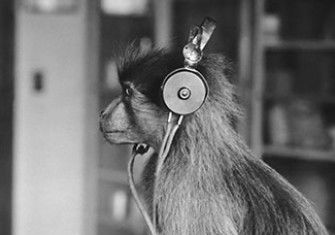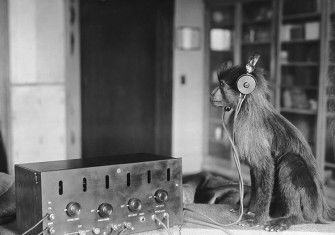‘Impossible Monsters’ by Michael Taylor review
Impossible Monsters: Dinosaurs, Darwin and the War between Science and Religion by Michael Taylor revels in the tangles of Victorian thought.

Darwin once speculated that the first spark of life had originated long ago, ‘perhaps millions of ages before the commencement of the history of mankind’. According to his dark Malthusian vision, the natural world resembled ‘one great slaughter-house, one universal scene of rapacity and injustice’ governed by a simple law: ‘Eat or be eaten!’ That evocative image reeks of Victorian cut-throat capitalism – but it was forged at the end of the 18th century by Erasmus Darwin. Long before his grandson hit the headlines, many naturalists recognised some form of evolutionary theory and agreed that the Bible did not provide an accurate guide to the age of the earth.
Charles Darwin is routinely celebrated as a British hero whose principle of natural selection mirrored society’s industrialisation, but his ideas had older roots. He studied his grandfather’s work closely, and was constantly haunted by this embarrassing ancestor. During the notorious debate at Oxford in 1860, Bishop Wilberforce supposedly taunted Thomas Huxley – Charles Darwin’s ‘bulldog’ – by asking which of his grandparents had descended from an ape, but in his written review of On the Origin of Species, it was Darwin’s own ‘ingenious grandsire’ Erasmus whom he named, shamed and blamed.
Along with many of his contemporaries, this earlier Darwin plays no part in Michael Taylor’s Impossible Monsters. As his rousing title suggests, Taylor has mapped out an exciting if idiosyncratic route through the tangle of 19th-century thought, maintaining that evolution struggled to become accepted in the face of resolute religious opposition. He ‘unapologetically’ sets his story in Britain during the Victorian era, when ‘British opinion often mattered more’ than anybody else’s, and glosses over earlier views that the biblical account of creation failed to account for the geological facts.
Taylor’s historical perspective was fashioned by his experiences as a child in ultra-Protestant Ulster, when he found it impossible to reconcile the prehistoric creatures of Jurassic Park striding across the family television screen with his teachers’ insistence on observing the biblical analysis of James Ussher, the Irish archbishop who decreed in the mid-17th century that the world was created in 4004 BC. Taylor shares Ussher’s predilection for definite dates: his own narrative opens in 1811, when Mary Anning announced her first major fossil discovery (which was not a dinosaur), and ends with what he regards as a key turning-point in British history: the burial in Westminster Abbey of ‘Charles Darwin, the author of the devil’s gospel’.
As Taylor admits in the first few pages of his book, historians have long discredited the facile notion of open warfare between science and religion. Moreover, dinosaurs played no role in On the Origin of Species. Darwin’s most rewarding encounter seems to have been with the large concrete models on display at the Great Exhibition in South Kensington. Yet persistently pursuing his childhood quest, Taylor opens with a substantial biography of Ussher, while paying scant attention to notable predecessors such as Jean-Baptiste Lamarck, the Enlightenment naturalist widely commemorated in France as the true pioneer of evolution.
Although the word dinosaur was not coined until 1842, several specimens had been described well before that. The accolade of ‘first’ goes to William Buckland, a delightfully eccentric Oxford clergyman who served his guests tasty snacks of mice on toast and kept a hyena in his back garden. Getting rather carried away, he doubled up the size of some mysterious bones unearthed in a nearby quarry to imagine giant lizards strolling around Blenheim, their tails as long as the local church steeple. Like many geologists and theologians throughout the century, Buckland was determined to reconcile Christianity and science, and he helped to promote the ingenious reinterpretation that there had been two distinct acts of creation separated by a long gap in time, a rhetorical trick that left geologists free to construct a progressive history for the earth. By the time Darwin eventually plucked up the courage to publish his theory of natural selection in 1859, Ussher’s pronouncement was no longer a major obstacle; instead, religious objections revolved around the absence of divine design and the possibility – strategically avoided by Darwin – that human beings might be related to primates.
Joined by countless other colourful characters, Buckland weaves in and out of Taylor’s chronological account, which skilfully blends an impressive array of sources into a highly readable, almost novelistic narrative. In particular, it features many women who played crucial roles but are too often invisible – women such as Buckland’s wife Mary, his diligent amanuensis who regularly stayed up all night taking dictation as well as identifying a clue to some problematic fossil footprints by persuading her pet tortoise to walk across the pastry she had just rolled out. Similarly, Mary Lyell translated German texts and recruited her maid Antonia to organise the household’s shell collection, while Mary Ann Mantell provided vital illustrations to illuminate her husband’s prose and spotted some unusual objects that turned out to be fossilised iguanodon teeth. But of course, the most striking example is Anning, formally uneducated but widely acknowledged as a self-taught expert. Fortifying herself with a network of female allies, Anning complained that ‘men of learning had sucked her brains’ as they established their own reputations on the basis of her initiative.
Dinosaurs stalk through the pages of Taylor’s work, relieving the gravity of the theological loops that Victorians loved to tangle themselves up in. Who could fail to be enchanted by the New Year’s Eve dinner party that was held inside an iguanodon replica in Sydenham? It took seven hours for the scholarly revellers to chomp their way through hare soup, rabbit curry and meringues, all washed down with copious supplies of alcohol. Including gripping tales as well as serious commentary, Impossible Monsters chips out a fascinating slice through the strata of Victorian society.
-
Impossible Monsters: Dinosaurs, Darwin and the War between Science and Religion
Michael Taylor
Bodley Head, 444pp, £22
Buy from bookshop.org (affiliate link)
Patricia Fara is an Emeritus Fellow of Clare College, Cambridge.






